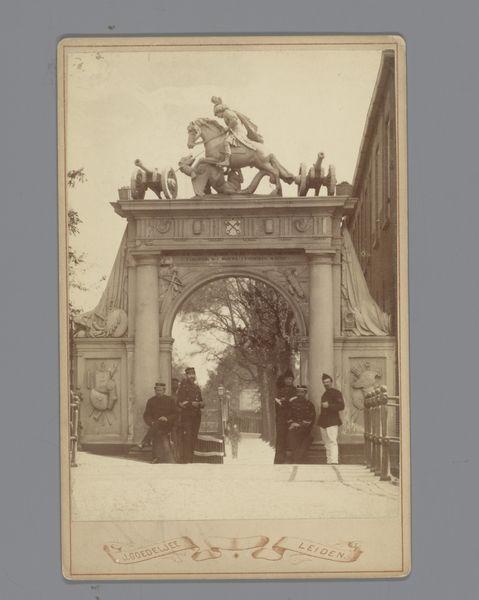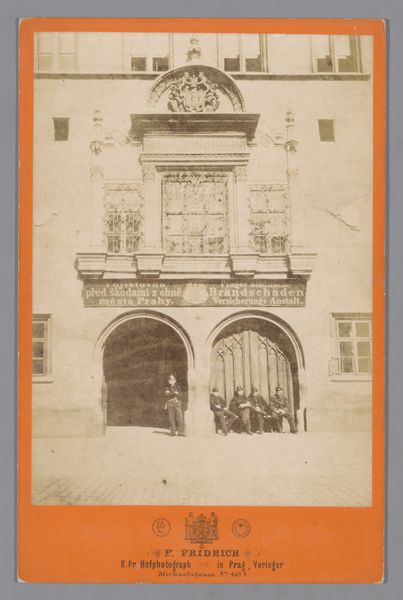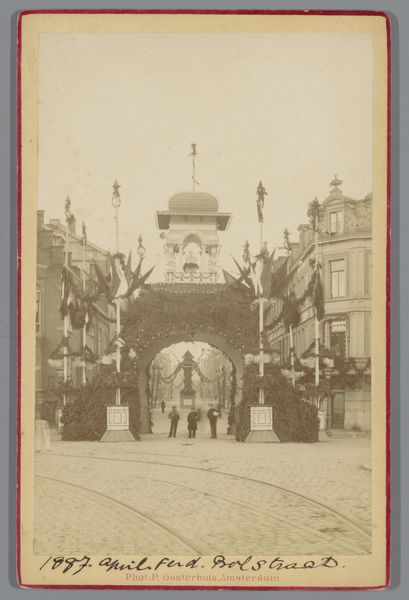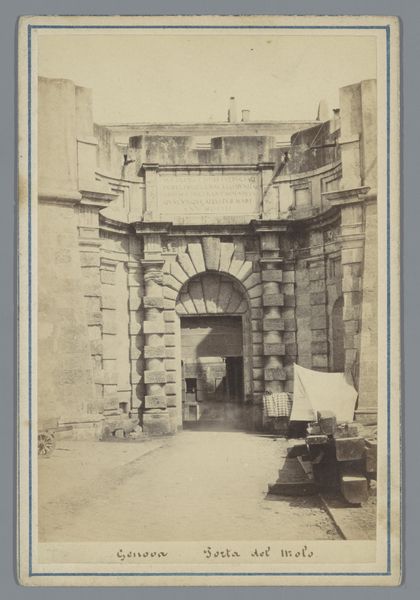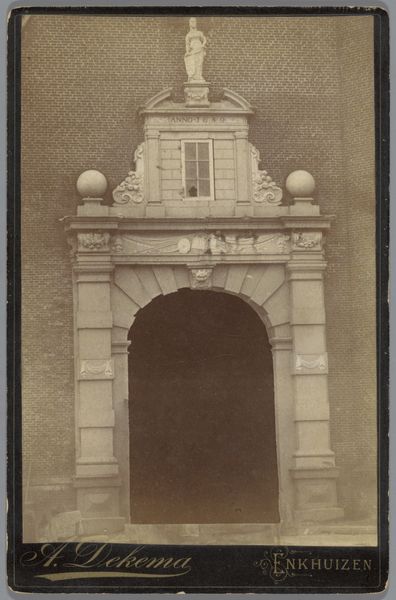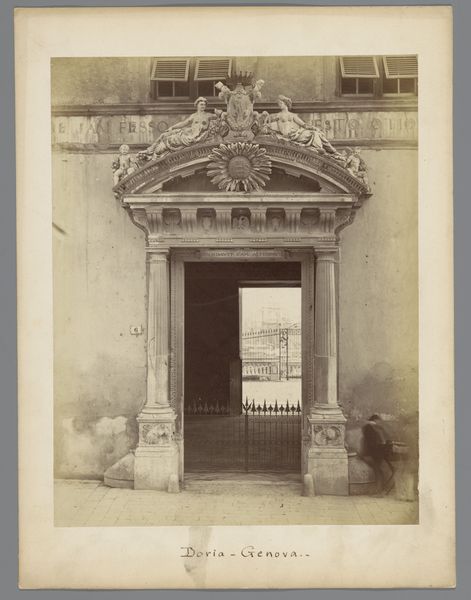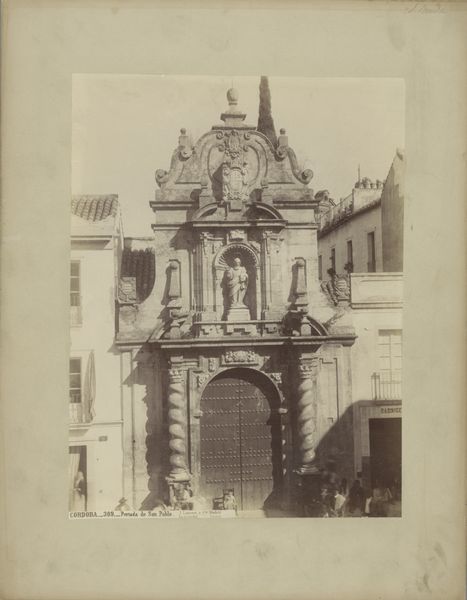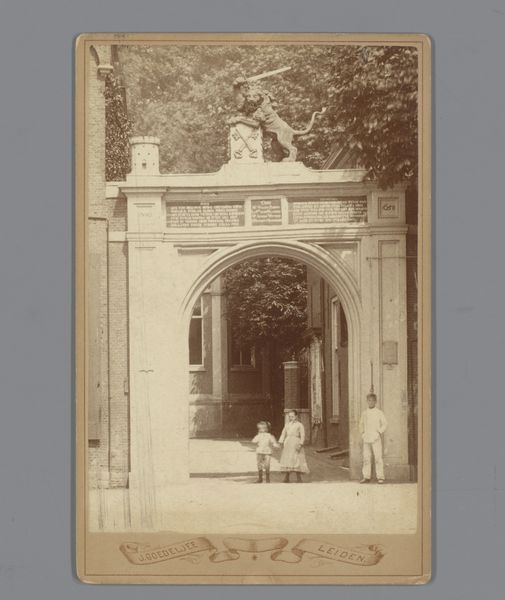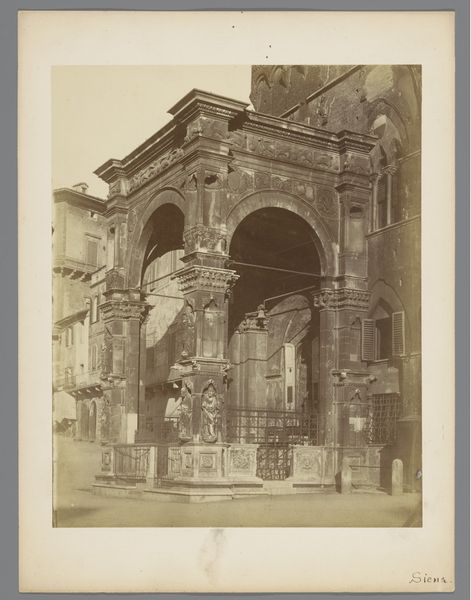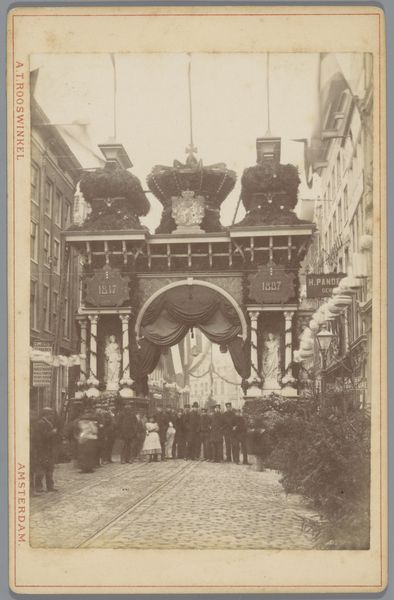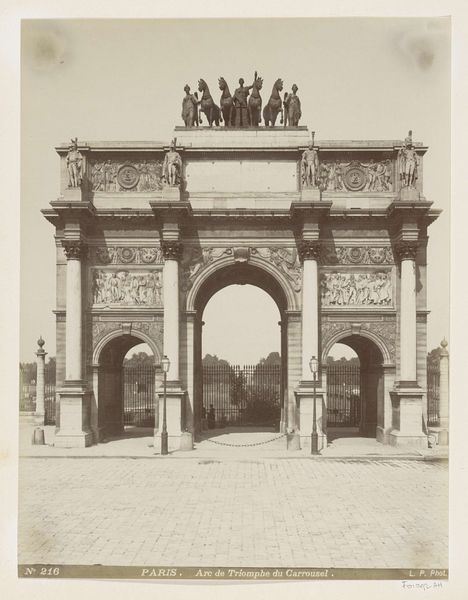
photography, gelatin-silver-print
#
portrait
#
photography
#
coloured pencil
#
gelatin-silver-print
#
cityscape
Dimensions: height 167 mm, width 107 mm
Copyright: Rijks Museum: Open Domain
Curator: This gelatin-silver print, created between 1850 and 1900 by Hendrik Jonker, depicts the Doelenpoort in Leiden. Editor: My immediate impression is of a carefully staged photograph, the subdued sepia tones lending it a palpable sense of history and maybe even a sense of foreboding. The imposing gate suggests something of state power, but what sort? Curator: The Doelenpoort, with its military statuary atop, speaks volumes about the militaristic culture and power structures inherent within Dutch society during that period. The figures arrayed before it seem very aware of their roles, reinforcing hierarchical gendered identities. We have soldiers standing guard, seemingly under the authority of gentlemen in suits. It’s hard not to see the portrait's emphasis on patriarchal identity and a tacit support for potential conflicts that arise in protecting its status quo. Editor: The arrangement of the figures—the group in suits to the left, the soldiers gathered within the archway—emphasizes divisions and the importance of order. Considering the material properties of photography, we might ask who possessed the resources to commission such a portrait? It would take specific access to the developing technology, placing power dynamically on both sides of the camera. How complicit or not do the picture's laborers become? Curator: That’s a brilliant point, highlighting the intertwined aspects of class and gender representation at play here. Who gets to be represented in a burgeoning media format, and how, undeniably becomes its own form of social commentary. Considering, too, the stiff poses and controlled expressions; photography at this time could be quite a rigid exercise. Editor: The gate itself—its architecture, those sculptures of military scenes along the top. Even that suggests a narrative carefully constructed by particular artisans under certain economic conditions. What was Leiden known for at that time, materially speaking? How much craftsmanship had the making of war become intertwined in its identity? I notice an inscription along the base of the image with some identifying characteristics about the "Photograaf", further intertwining commerce into the piece. Curator: Examining this work through a feminist lens urges me to question those seemingly inherent associations—militarism, order, and so forth—that were being reinforced through art and visual culture during this era. How could marginalized communities in Leiden react, given what was, or was not available, to them at that time? Editor: Precisely! We need to consider not just the image but also the socio-economic currents running through Leiden during the period, giving it concrete shape. Curator: Thank you for that fascinating breakdown of the economic and material layers inherent within this seemingly simple photographic piece, I believe that adds to our viewing so much! Editor: A pleasure. It helps one appreciate that art is not separate from real life, real circumstances.
Comments
No comments
Be the first to comment and join the conversation on the ultimate creative platform.
